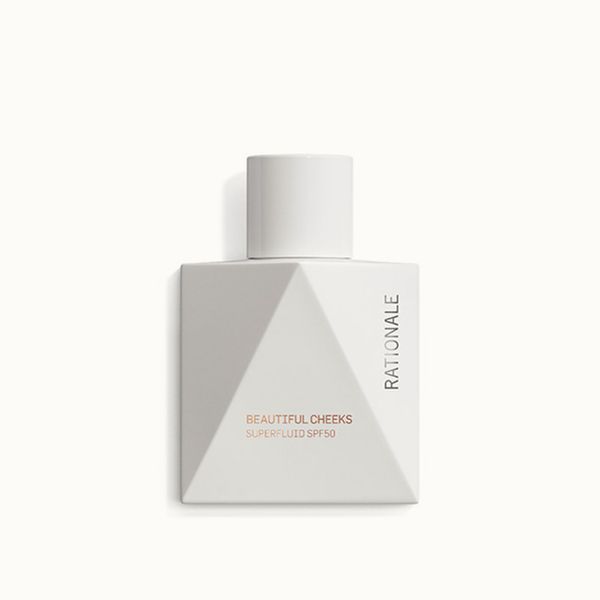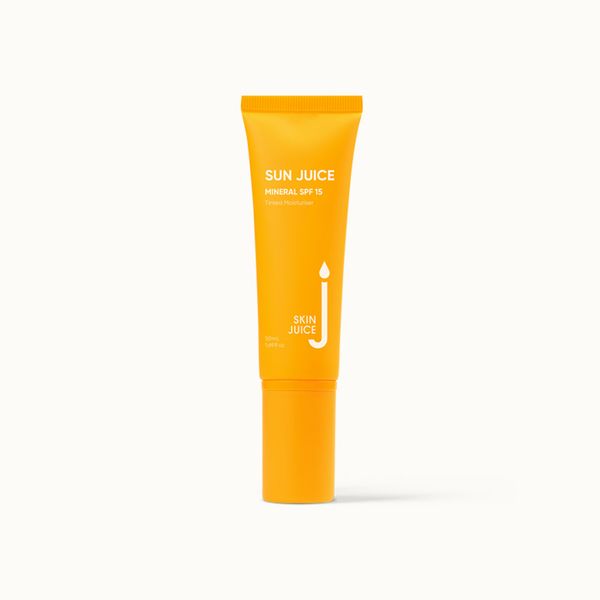
#3 The Tinted Serum SPF50+
Rationale
$204.00

Ask any of our skin therapists, and they will all tell you that one of the keys to healthy skin that ages well is using sunscreen. For anyone under 30, sun protection is the absolute best anti-ageing product you can use. After 30, sunscreen should remain a lifelong habit to slow ageing and prevent sun damage.
In the last few years we have really seen a push from experts, particularly in Australia, to make sunscreen part of your everyday routine all year round. While many of our FENN friends have done this, as we step closer to sunny summer days (please stay away La Nina 2.0!) We thought it was time for a reminder to amp up the SPF.
A few key considerations for your sunscreen routine:
1. Is makeup with SPF enough?
Even if all your makeup products have a degree of SPF in them, this still won’t give you sufficient protection from the sun as chances are, these products aren’t providing Broad Spectrum protection. Plus, the amount you apply simply doesn’t stack up to the coverage a regular, liquid sunscreen can provide. So, make sure to apply your sunscreen in the morning, followed by your makeup. Fenn has a range of tinted sunscreens which offer a great alternative to makeup or act as a perfect primer underneath makeup; Rationale Tinted Serum #3 or Beautiful Skin Superfluid SPF 50 which is available in 3 tints, which pairs effortlessly with the Rationale Superfluid Range in Bronze, Cheeks & Light. And we are longtime fans of Josh Rosebrook’s Tinted Nutrient Day Cream SPF 30 and Sun Juice Tinted SPF 15.
Or skip the tinted formulas for day cream that includes SPF with any of the following: Rationale The Enriched Cream SPF 15, Josh Rosebrook’s Non Tinted Nutrient Day Cream SPF 30 or Sun Juice Non Tinted SPF 15.
2. SPF Guide & Broadspectrum
In terms of SPF numbers, we always recommend that you use a minimum of SPF 30 in the Australian summer sun. A good cheat sheet is the following: SPF 15 blocks 93% of UVB rays, SPF 30 blocks 97% of UVB rays, and SPF 50 blocks 98% of UVB rays. It’s important to remember a general SPF sunscreen does not protect you from both UVA and UVB rays unless it’s labelled as Broad Spectrum. SPF (“Sun Protection Factor'') is only a measure of protection from the sun’s UVB rays. For the highest protection we recommend Mother SPF and Rationale SPF 50 Beautiful Skin Superfluid range.
3. What about ensuring I get Vitamin D?
You can get adequate amounts of vitamin D through your diet and just about 5-10 minutes in the sun each day while still wearing sunscreen. The Skin Cancer Foundation confirms that “clinical studies have never found that everyday sunscreen use leads to vitamin D insufficiency.” In fact, they’ve found the opposite: “the prevailing studies show that people who use sunscreen daily can maintain their vitamin D levels.” If your vitamin D levels are still low, you can speak to a naturopath about starting a supplement, but don’t skimp on sunscreen.

.
4. Sunscreen & Breakouts…
Finding the right sunscreen to suit your skin can take some trial and error, due to the wide range in formulations. If you think your current sunscreen is causing congestion or breakouts, your best bet is opting for a physical sunscreen or one that’s specifically formulated for breakout-prone skin. Same goes for sensitive skin types, we recommend a physical mineral sunscreen.
5. Physical v Chemical?
The two types of sunscreen (physical and chemical) work similarly; Both absorb UV radiation to protect your skin, but physical sunscreen also reflects UV lights.
Physical/mineral filters scatter or reflect UV rays, as they sit on the surface of your skin, actively blocking UV rays. They can feel a little heavy on the skin but are perfect for all skin types, including sensitive skin. Physical sunscreens protect the skin in exactly the way their name suggests: they create a physical barrier between your skin and the sun. These products don't absorb into the skin but remain on the surface. Physical sunscreens are naturally broad-spectrum, protecting against both UVA and UVB rays.
The two most common physical sunscreen ingredients are titanium dioxide and zinc oxide. Physical sunscreens have come a long way from the thick, white zinc smear we remember as kids, as modern formulations use zinc oxide and titanium dioxide in micronized form to yield a sheerer formula.
Chemical sunscreens penetrate the skin and absorb harmful UV rays before they can damage the epidermis. These products are typically fast-absorbing, sheer, and lightweight. Unfortunately, chemical sunscreens may cause sensitivity and irritation.
Chemical sunscreens such as avobenzone and homosalate essentially soak up UVA and UVB rays like a sponge. But a single chemical is generally not enough to protect against both types of harmful rays. Compound formulas are more likely to provide effective broad-spectrum protection but it’s important to note that because chemical sunscreens are often present in combinations of three or four in one product, they're more likely to cause sensitivity than physical sunscreens. Also important to note that some ingredients in some chemical sunscreen formulations have been found to be endocrine disruptors, which means they interfere with hormones, damaging to the thyroid and can cause allergic skin reactions.
At FENN we offer a range of mineral/physical sunscreens, as we find this suits our clientele’s skin best. For more advice on which sunscreen to include in your skincare routine visit us in store at FENN.

#3 The Tinted Serum SPF50+
Rationale
$204.00

Beautiful Cheeks Superfluid SPF50
Rationale
$72.00

Beautiful Light Superfluid SPF50
Rationale
$72.00

Beautiful Bronze Superfluid SPF50
Rationale
$72.00

Beautiful Skin Superfluid SPF50 C1
Rationale
$102.00

Nutrient Day Cream SPF 30 Tinted, 50mL
Josh Rosebrook
$156.00

Sun Juice Tinted SPF 15
Skin Juice
$49.00

Mother Organic Mineral Sunscreen SPF50
Mother
$52.00

#3 The Enriched Crème SPF15
Rationale
$212.00